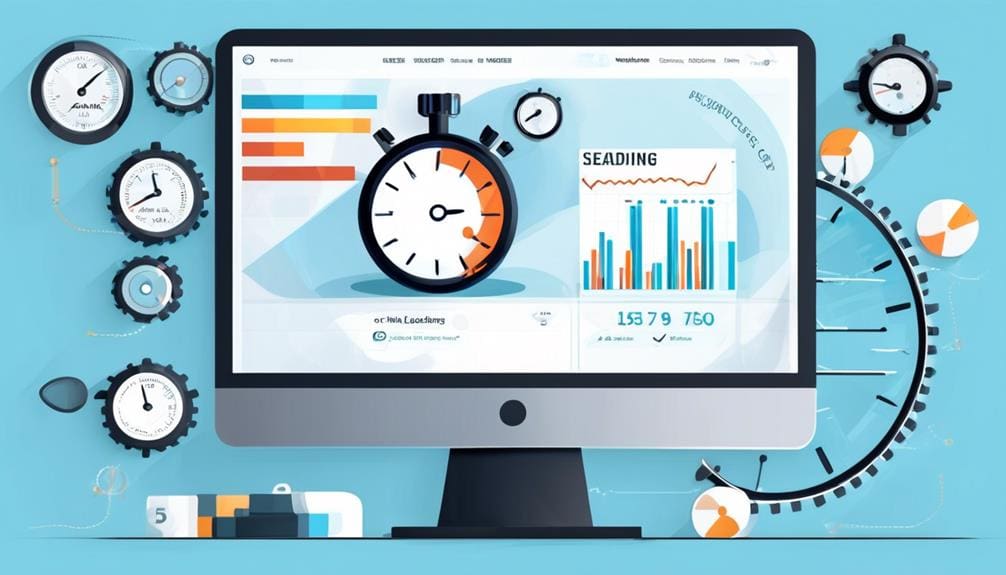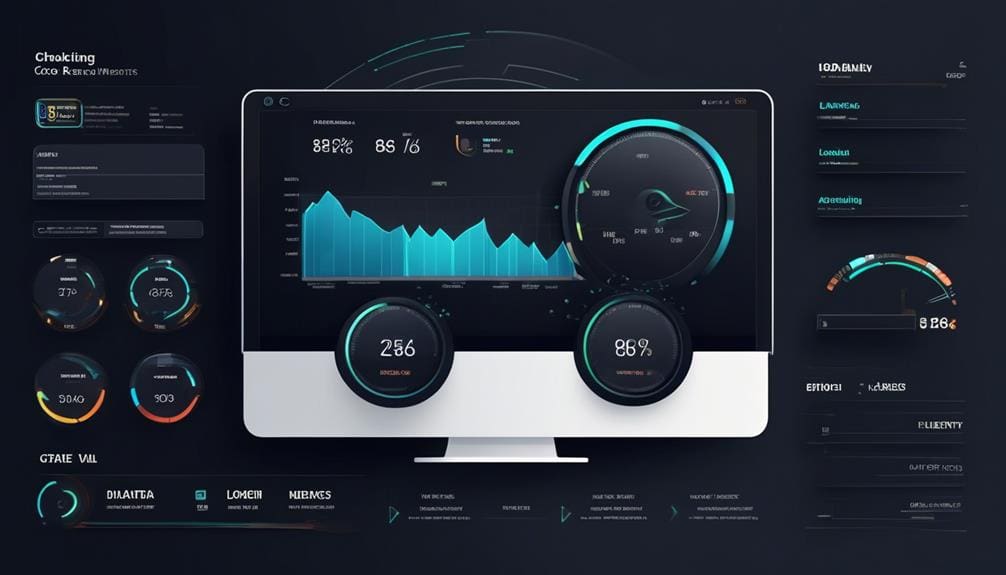
In a recent study, it was found that 75% of users never scroll past the first page of search results. As professionals, we understand the critical importance of a comprehensive SEO audit and report in ensuring our digital presence is optimized for maximum visibility. Today, we will explore the seven essential steps for conducting a meticulous SEO audit that uncovers actionable insights to boost our website's performance. From identifying indexing issues to assessing mobile-friendliness and analyzing core web vitals, each step is crucial in uncovering areas for improvement and staying ahead in the competitive digital landscape.
Identify Indexing Issues
We identify indexing issues by checking Google Search Console for any URLs that are not indexed, then we address these issues to ensure optimal visibility in search results. This step is crucial in the on-page SEO audit process as it directly impacts the website's performance in search engine results. When conducting an SEO audit, it's essential to analyze how Google indexes the site's content. By examining the indexing status of various URLs, we can pinpoint any problematic areas that may hinder the site's visibility. Additionally, we focus on identifying and addressing URLs that don't need to be indexed. This ensures that only relevant and valuable content is surfaced in search results, enhancing the overall user experience. Moreover, we ensure that only one version of the site is indexed to avoid duplicate content issues. If multiple versions exist, we redirect them to the main version, consolidating the site's authority and maximizing SEO performance. These actions are fundamental in maintaining a healthy and optimized website, aligning with the best practices of an SEO audit checklist.
Check for Duplicate Content

Checking for duplicate content is a critical step in optimizing a website's performance and ensuring its visibility in search engine results. It is important to conduct an SEO audit to identify any duplicate content issues that may be impacting the website's ranking. Here are the key actions to take when checking for duplicate content:
- Ensure only one version of the content is indexed to avoid diluting the website's organic ranking potential.
- Redirect any duplicate content to the preferred version, consolidating link equity and preventing keyword cannibalization.
- Understand the impact of multiple site versions on SEO rankings, as it can lead to decreased visibility and traffic.
- Utilize specialized tools for quick identification of duplicate content across the website, enabling efficient resolution of issues.
- Analyze canonical tags to specify the preferred version of a web page and consolidate ranking signals for the identified content.
Perform Site Crawl

To thoroughly analyze a website's performance and potential optimization opportunities, conducting a comprehensive site crawl is an essential first step. A site crawl involves using an SEO auditing tool to simulate Google's crawl of the website. This process provides valuable insights into the site's health, technical issues, and content structure. The Site Health score obtained from the crawl assesses the overall health of the website, highlighting areas that require immediate attention. Addressing errors, warnings, and notices discovered during the crawl is crucial for effective site optimization.
Thematic Reports generated from the crawl offer detailed insights into the website's content and structure, aiding in the identification of SEO issues and potential improvements. The site crawl also helps in identifying technical issues such as broken links, redirects, and indexing problems. Below is a table summarizing key aspects addressed during a site crawl:
| Aspect | Description |
|---|---|
| Site Health | Assesses overall website health, highlighting areas needing attention. |
| Thematic Reports | Provides detailed insights into website content and structure for SEO improvement. |
| Technical Issues | Identifies problems like broken links, redirects, and indexing issues that impact site speed and user experience. |
Conducting a site crawl provides valuable data for SEO experts to address internal links, broken links, site speed, and overall website audit through tools like Google Search Console and Site Audit tools.
Review Manual Actions

Upon identifying manual actions from Google, it is crucial to promptly assess the violations and initiate corrective measures to mitigate their impact on SEO rankings. Reviewing manual actions involves thorough analysis and strategic planning to ensure compliance with Google's quality guidelines. Here are the essential steps for reviewing manual actions:
- Understand the nature of the manual action and its specific implications for the website.
- Conduct a comprehensive audit of the website to identify and rectify any violations that led to the manual action.
- Keep abreast of Google algorithm updates to align the website with the latest SEO best practices.
- Implement necessary changes to the website's content, structure, and technical aspects to meet Google's quality standards.
- Submit a reconsideration request to Google, providing detailed documentation of the corrective measures taken to address the manual action.
Reviewing manual actions demands meticulous attention to detail and a proactive approach to resolving any issues that may impact SEO performance. By following a structured SEO auditing process and addressing manual actions effectively, websites can recover from Google penalties and enhance their search visibility.
Assess Mobile-Friendliness

We can gauge the mobile-friendliness of a website by considering its impact as a ranking factor and utilizing the Mobile Usability report in Google Search Console to identify and address any issues. Ensuring that a website is optimized for mobile is crucial, as search engines like Google prioritize mobile-friendly websites for mobile searches. The Mobile Usability report provides insights into specific mobile usability issues, such as text that's too small to read, clickable elements too close together, and viewport configuration problems. Addressing these issues can significantly improve user experience and search engine rankings.
To further assess mobile-friendliness, we should also consider page speed and user experience. The Core Web Vitals report in Google Search Console provides valuable data on a website's loading speed, interactivity, and visual stability, all of which impact mobile usability. It's essential to ensure that the site performs well on both mobile and desktop devices.
| Mobile Usability Report | Core Web Vitals Report |
|---|---|
| Identifies mobile usability issues | Assesses loading speed, interactivity, and visual stability |
| Helps improve user experience | Provides performance data for mobile and desktop |
Analyze Site Speed

When analyzing site speed, it's crucial to utilize speed testing tools to measure performance and identify areas for improvement. Page load optimization is essential for reducing bounce rates and improving user experience, especially on mobile devices. Mobile responsiveness is a key factor in ensuring that the website loads quickly and efficiently across all devices.
Speed Testing Tools
By utilizing Site Audit's Site Performance report, we can effectively analyze the speed of our website and identify areas for improvement. Speed testing tools play a crucial role in evaluating page load time and enhancing site performance. Here are some essential speed testing tools for conducting a comprehensive SEO audit:
- PageSpeed Insights: Offers detailed suggestions for improving page speed and user experience.
- GTmetrix: Provides actionable insights to optimize site speed and ensure better search engine results page rankings.
- WebPageTest: Analyzes load time and identifies performance bottlenecks for enhanced user satisfaction.
- Pingdom: Monitors site performance, identifies slow-loading pages, and helps in improving organic traffic.
- Lighthouse: Evaluates Core Web Vitals, offering valuable insights into site speed and user experience optimization.
Page Load Optimization
Analyzing the site speed is a critical aspect of optimizing page load times and enhancing overall user experience for improved SEO performance. Slow page load times can significantly impact a site's SEO performance in organic search results, leading to higher bounce rates and lower rankings. To address this, it's important to utilize tools such as Site Audit's Site Performance report to identify speed issues and make necessary improvements. Checking for duplicate content, optimizing content length, and addressing other important areas that impact page load times can help ensure that the website is ranking well and providing a seamless user experience. By prioritizing page load optimization, we can help improve the overall performance and visibility of the website in search engine results.
Mobile Responsiveness
Mobile responsiveness plays a crucial role in user experience and SEO rankings, necessitating a thorough analysis of site speed to ensure fast loading times on mobile devices. Analyzing site speed is essential for mobile optimization. Utilize tools like Google PageSpeed Insights or GTmetrix to assess mobile site speed, and address speed issues by optimizing images, minimizing server response time, and enabling browser caching. Remember, mobile site speed impacts user bounce rate and search engine rankings. It's crucial to monitor site speed regularly using Google Analytics to understand the Search Performance for both Desktop and Mobile. This will aid in identifying areas for improvement and optimizing the site architecture for better mobile responsiveness and overall SEO metrics.
Evaluate Core Web Vitals

We analyzed the Core Web Vitals of our website using Google Search Console's Core Web Vitals report to gain insights into our page speed and user experience metrics. This evaluation is crucial as Core Web Vitals have become a significant ranking factor in organic search, impacting the health of your website. By leveraging Site Audit tools, we were able to assess our Core Web Vitals performance and identify potential SEO issues that could be affecting our rankings and user satisfaction.
To provide a clear overview of our Core Web Vitals assessment, here are the key metrics we focused on:
| Metric | Description | Our Website's Performance |
|---|---|---|
| Largest Contentful Paint (LCP) | Measures loading performance. | 2.5s |
| First Input Delay (FID) | Assesses interactivity and responsiveness. | 100ms |
| Cumulative Layout Shift (CLS) | Evaluates visual stability. | 0.1 |
Addressing issues related to these metrics is vital for improving our website's performance and user experience. Through this evaluation, we gained actionable insights to optimize our Core Web Vitals and enhance our overall SEO strategy.
Frequently Asked Questions
How Do You Conduct a Comprehensive SEO Audit?
We conduct a comprehensive SEO audit by analyzing keyword performance, evaluating content quality, reviewing backlink profile, comparing with competitors, assessing page speed, optimizing for mobile, prioritizing user experience, ensuring on-page optimization, and examining site architecture using top SEO tools.
How Do You Complete a Technical SEO Audit in 8 Steps?
We complete a technical SEO audit in 8 steps. We conduct keyword research, analyze content, evaluate backlinks, optimize for mobile, improve page speed, structure URLs, enhance meta tags, resolve indexing issues, and optimize internal linking and images.
How to Perform an SEO Audit in 2023?
We perform an SEO audit in 2023 by utilizing top SEO tools for comprehensive website analysis, focusing on keyword optimization, content evaluation, backlink assessment, and user experience. We also prioritize mobile responsiveness, competitor analysis, algorithm updates, and performance tracking.
What Is Included in an SEO Site Audit?
In an SEO site audit, we analyze content, backlink profile, and keyword research. We compare with competitors, optimize on-page and off-page factors, assess user experience, mobile responsiveness, site speed, and implement local SEO strategies.
RELATED POSTS
View all



